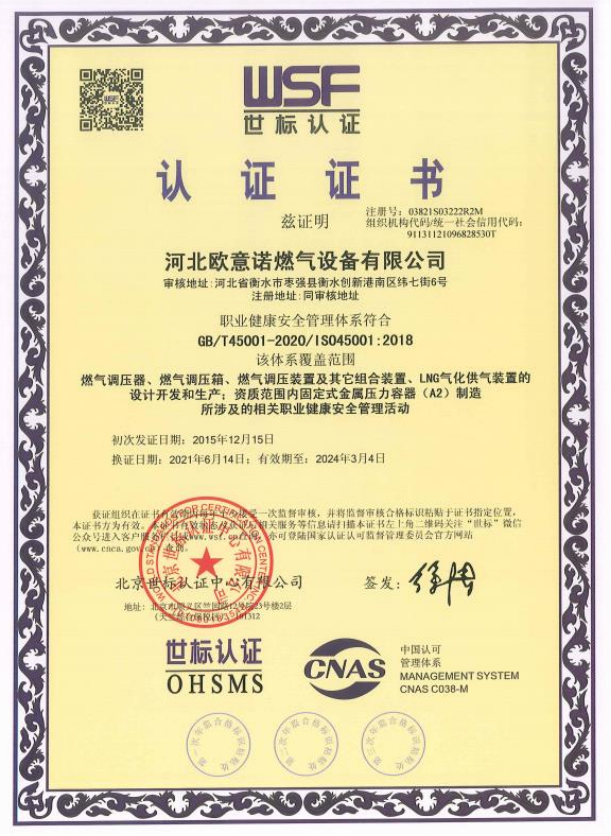
Dec . 15, 2024 00:24
Back to list
gas heat exchanger
Gas Heat Exchanger An Overview and Its Applications
A gas heat exchanger is a crucial component in numerous industrial processes where the transfer of thermal energy between two fluids is necessary. This device plays a vital role in optimizing energy efficiency, reducing operational costs, and minimizing environmental impact. In this article, we will explore the principles of gas heat exchangers, their types, applications, and the benefits they offer.
Principles of Operation
At its core, a gas heat exchanger functions by facilitating the transfer of heat between two gas streams without mixing them. Typically, one gas stream is hot, usually due to a combustion process, and the other is cooler, often preheated before it enters another process. The heat exchanger exploits the principles of thermodynamics—specifically conduction and convection—to transfer heat from the hot side to the cold side.
The efficiency of a gas heat exchanger is determined by its surface area, the temperature difference between the hot and cold gases, and the flow arrangement. The two main flow configurations are counterflow and parallel flow. In a counterflow arrangement, the two gas streams move in opposite directions, allowing for greater heat retention and improved thermal efficiency.
Types of Gas Heat Exchangers
There are several types of gas heat exchangers, each designed for specific applications and operational requirements.
1. Shell and Tube Heat Exchangers These consist of a series of tubes, one set carrying the hot gas and the other the cold gas. They are highly efficient and can be designed for high-pressure applications.
2. Plate Heat Exchangers Comprising multiple thin plates stacked together, this type allows for a large surface area in a compact design. They are ideal for processes requiring high thermal transfer efficiency and are easier to clean and maintain.
3. Air-to-Air Heat Exchangers Common in HVAC systems, these exchangers utilize ambient air to preheat or cool incoming air, maximizing energy efficiency in buildings.
4. Regenerative Heat Exchangers In these systems, heat is temporarily stored in a material (often ceramic) before being transferred to the incoming gas. They are particularly effective in applications requiring large temperature jumps.
Applications
gas heat exchanger

Gas heat exchangers are found in a wide array of industries, such as petrochemicals, power generation, automotive, refrigeration, and HVAC.
- Power Generation In gas turbines, heat exchangers are used to recover waste heat from exhaust gases, improving the overall efficiency of the power cycle. - Chemical Processing Gas heat exchangers facilitate reactions in chemical processes by maintaining optimal temperature conditions, allowing for more efficient production.
- Environmental Control In pollution control systems, gas heat exchangers help in processes such as flue gas treatment by recovering heat before emissions are released into the atmosphere.
Benefits
The use of gas heat exchangers offers several benefits
1. Energy Efficiency By recovering waste heat, businesses can significantly reduce their overall energy consumption.
2. Cost Reductions Improved efficiency translates to lower operational costs, making businesses more competitive.
3. Environmental Impact Minimizing energy waste contributes to reducing greenhouse gas emissions, aligning with global sustainability goals.
4. Operational Reliability Designs that promote better heat transfer and lower temperature differentials lead to extended equipment life and reduced maintenance needs.
Conclusion
Gas heat exchangers are integral to a multitude of industrial applications. Their ability to efficiently transfer heat not only supports operational excellence but also advances sustainability efforts across various sectors. As industries continue to evolve and prioritize energy efficiency, the role of gas heat exchangers will undoubtedly become even more critical in achieving these goals. As technology progresses, we can anticipate even greater enhancements in heat exchanger designs, leading to further efficiency improvements and expanded applications in the future.
Latest news
-
Safety Valve Spring-Loaded Design Overpressure ProtectionNewsJul.25,2025
-
Precision Voltage Regulator AC5 Accuracy Grade PerformanceNewsJul.25,2025
-
Natural Gas Pressure Regulating Skid Industrial Pipeline ApplicationsNewsJul.25,2025
-
Natural Gas Filter Stainless Steel Mesh Element DesignNewsJul.25,2025
-
Gas Pressure Regulator Valve Direct-Acting Spring-Loaded DesignNewsJul.25,2025
-
Decompression Equipment Multi-Stage Heat Exchange System DesignNewsJul.25,2025

